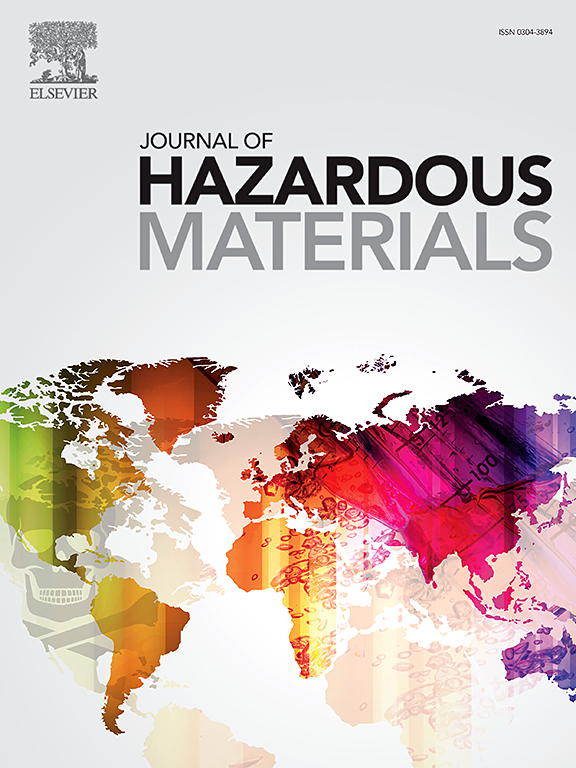Exploiting the gut microbiota of aquatic animals as indicators of microplastic pollution using interpretable machine learning models
IF 11.3
1区 环境科学与生态学
Q1 ENGINEERING, ENVIRONMENTAL
引用次数: 0
Abstract
The response of aquatic animal gut microbiota to microplastics has been extensively studied and shows sensitivity, however, the potential of using gut microbiota as indicators for microplastic pollution has not yet been fully explored. To address this gap, we analyzed publicly available sequencing data of gut microbiota from 17 aquatic species (634 samples), including both microplastic-exposed and unexposed groups. Using interpretable machine learning models, we demonstrated that microplastics significantly altered the composition and functional profiles of gut microbiota in both freshwater and saltwater animals, reducing functional redundancy. Random forest models based on genus-level taxonomy effectively indicated microplastic pollution, achieving AUC values above 0.8. Through Shapley Additive Explanation (SHAP) value analysis, we identified 20 freshwater and 25 saltwater gut microbial indicators of microplastic pollution, with Aurantimicrobium and Salipiger_489036 emerging as the most important indicators for freshwater and saltwater environments, respectively. Notably, the importance of these indicators varied depending on the host species and pollution context. For example, Aurantimicrobium exhibited greater importance under conditions of prolonged exposure and higher microplastics concentrations, whereas Salipiger_489036 was more prominent in scenarios involving larger microplastic sizes. Overall, our findings highlight the potential of gut microbiota as a novel tool for assessing microplastic pollution in aquatic environments.

利用可解释的机器学习模型,利用水生动物的肠道微生物群作为微塑料污染的指标
水生动物肠道菌群对微塑料的反应已被广泛研究并显示出敏感性,但利用肠道菌群作为微塑料污染指标的潜力尚未得到充分挖掘。为了解决这一差距,我们分析了来自17个水生物种(634个样本)的肠道微生物群的公开测序数据,包括微塑料暴露组和未暴露组。使用可解释的机器学习模型,我们证明了微塑料显着改变了淡水和咸水动物肠道微生物群的组成和功能特征,减少了功能冗余。基于属级分类的随机森林模型能有效指示微塑料污染,AUC值在0.8以上。通过Shapley加性解释(SHAP)值分析,我们确定了20个淡水和25个咸水微塑料污染的肠道微生物指标,其中Aurantimicrobium和Salipiger_489036分别是淡水和咸水环境中最重要的指标。值得注意的是,这些指标的重要性因宿主物种和污染环境而异。例如,auurantimicrobium在长时间暴露和较高微塑料浓度的条件下表现出更大的重要性,而Salipiger_489036在涉及较大微塑料尺寸的情况下更为突出。总的来说,我们的研究结果强调了肠道微生物群作为评估水生环境中微塑料污染的新工具的潜力。
本文章由计算机程序翻译,如有差异,请以英文原文为准。
求助全文
约1分钟内获得全文
求助全文
来源期刊

Journal of Hazardous Materials
工程技术-工程:环境
CiteScore
25.40
自引率
5.90%
发文量
3059
审稿时长
58 days
期刊介绍:
The Journal of Hazardous Materials serves as a global platform for promoting cutting-edge research in the field of Environmental Science and Engineering. Our publication features a wide range of articles, including full-length research papers, review articles, and perspectives, with the aim of enhancing our understanding of the dangers and risks associated with various materials concerning public health and the environment. It is important to note that the term "environmental contaminants" refers specifically to substances that pose hazardous effects through contamination, while excluding those that do not have such impacts on the environment or human health. Moreover, we emphasize the distinction between wastes and hazardous materials in order to provide further clarity on the scope of the journal. We have a keen interest in exploring specific compounds and microbial agents that have adverse effects on the environment.
 求助内容:
求助内容: 应助结果提醒方式:
应助结果提醒方式:


